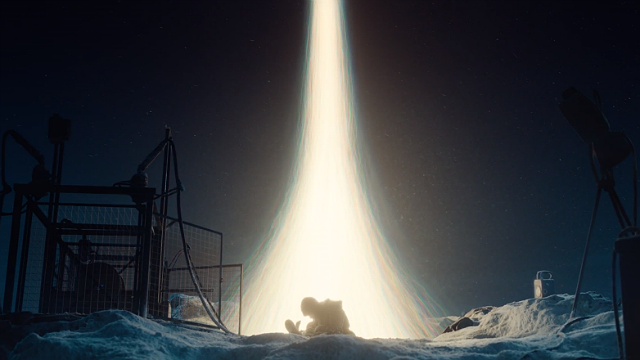Never work with kids or animals? Phillip Pullman's His Dark Materials on paper and on screen
His Dark Materials: Children, Animals, Dæmons
The imaginations of children are one of this world’s wonders. Whether you like children or not, there’s no denying that some magic attends the mind of a child, and it’s kind of beautiful. What happens, then, when those children grow up, loving the stories they love, imagining those stories with the imagination of a child, and see those stories played out on a screen?
Adapting literature for film or TV is always a delicate creative challenge, but when that literature has a special place in a person’s childhood, that pressure becomes even more massive. Philip Pullman’s His Dark Materials trilogy is unequivocally one of my favourite book series, so there is a real bias behind this post, but the feelings of nostalgia and protectiveness which I approach adaptations of Pullman’s stories with are not exclusive to me - I’m certain others feel the same way about their own special book or story or series.

Children’s imaginations seem to gravitate towards animals. Animals are a common feature of children’s literature, film and TV, and in Pullman’s His Dark Materials, animals are the embodiment of the human soul. There are many things we could pick apart regarding animals in His Dark Materials - analyse the philosophy behind dæmons, or the relationship between the human and the animal - but with regards to adapting children’s literature for the screen, what’s striking to me is the physicality of the dæmon-human connection.
In Pullman’s imagination, humans and dæmons are both corporeal and something more than mere flesh. They have personalities, impulses, emotions and memories which are shared and yet are not identical. They are fundamentally inseparable (to separate a human from its dæmon is a painful and drastic process) but they do inhabit separate bodies.
On the pages of Pullman’s novel, these ideas manifest themselves to the imagination differently to the way they are presented to us on screen. Partly because what Pullman describes is fantastical and quite difficult to fathom (how do I conceive my entire soul as a single animal being?) and partly because (a child’s) literary imagination is not as restricted as the semi-reality of the screen. When fantasy appears on screen, it feels to me that something of the imaginative magic is lost. Yes it’s still fantasy, and the version on screen is just one of endless possible renditions (it might well be a very loyal rendition), but the version on screen is realised in a way that no other imagined version has been. Seeing something on screen makes that thing real, in a way.
And that’s the tricky thing. On the one hand, giving visual and physical reality to a world and fantasy which existed previously only in an imagined space in the mind can be a wonderful expression of that imagination. On the other hand, visual and physical depictions on screen seem to taint the sanctity of imagination, by putting forward the agenda and aesthetics of the screen version as the way to visualise the fantasy.
 |
| A bridge to other worlds |
Now apply that to a fantasy world where special attention is paid to the physicality of the self (or selves), and it’s necessary to portray those bodies on screen. Something about the dæmon defies physical categorisation, despite the fact that they obviously do take a physical form (and eventually settle in a particular form when the human matures into adulthood). As a manifestation of the soul, it’s a different imaginative experience to conceive of a dæmon in literature than it is to see a dæmon on screen, because suddenly the dæmon is real and actually has a body.
Another way of thinking about the elusiveness of the dæmon (or other imagined things) might be to consider the production process. The dæmon, in His Dark Materials, is not played by an actual animal, but is a digitally rendered object on screen. The actors are not interacting with a real dæmon or even a real animal in their performances, but imagining what it might be like to have a conversation with your soul.
 |
| Lee Scoresby (Lin-Manuel Miranda) and his dæmon Hester (Helen McCrory; may she rest in peace) |
This might be quite specific to His Dark Materials, as far as the significance of talking to fictional creatures goes in Pullman’s world, but the idea that literary imaginations have a different dimensionality to the imagination presented on screen is one that rings true of a lot of fiction. This is emphasised even further in children’s imaginations, where fantasy and fiction run riot.
That said, screen adaptations are not automatically inferior. Whilst I maintain that something deeply personal about the imagination might be tainted by adaptation, adaptations can also create new space. All the countless versions of a story, whether fantastical stories for children or Gothic horror or wild comedy, can all coexist in dialogue with one another. Seeing a version of a story on screen might flick a switch in our imaginations, might wipe away the dust clouding our vision of what something or someone could be like, might provide us with a missing piece in the jigsaw. Adaptation doesn’t have to ruin childhoods and disappoint us. Adaptation can be a space where people who love something come together.

Comments
Post a Comment